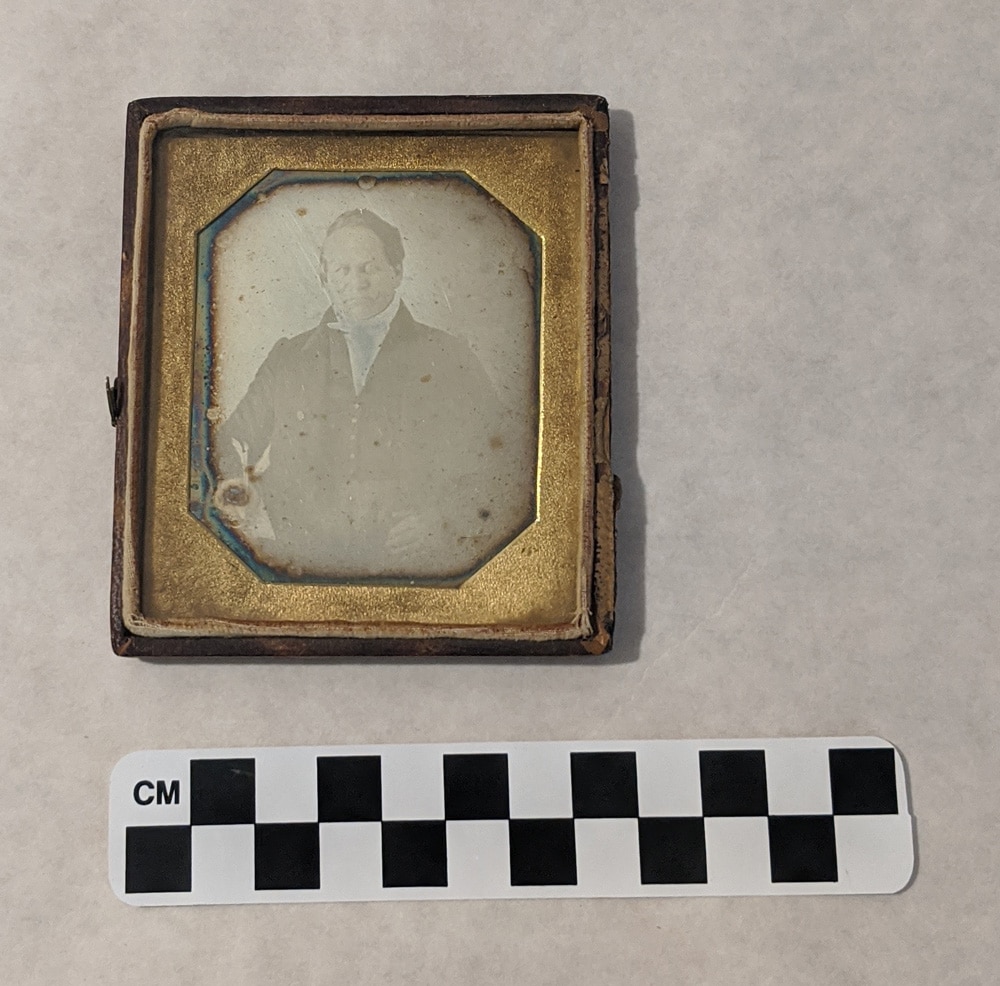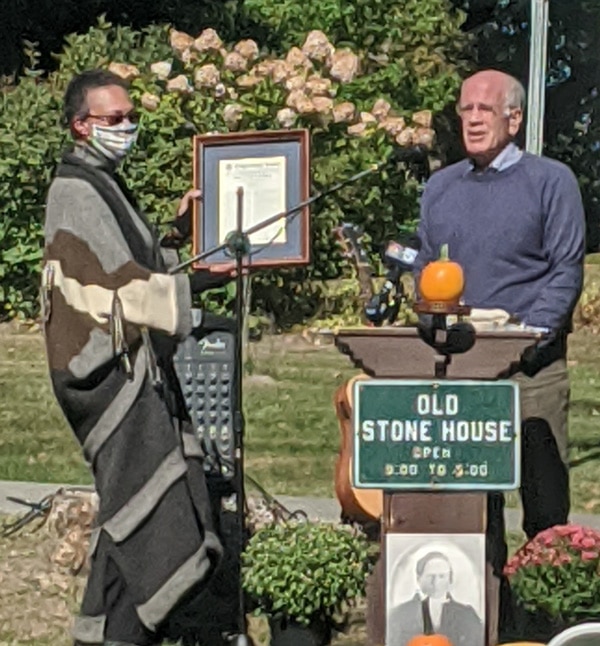
A daguerreotype of Alexander Lucius Twilight.
This week’s eleventh Twilight Tidbit takes a closer look at the only known photograph of Alexander Twilight. If you have visited the Old Stone House Museum or joined our virtual programs, you have probably seen this picture or one of a few different versions of it. Stay tuned next week for our next Tidbit from the life and times of Mr. Twilight.
The original photograph is a daguerreotype, or a type of photograph produced by treating silver-plated copper with chemicals to make it light-sensitive before then exposing it in a camera. Daguerreotypes create an ethereal image that appears on the mirror-like surface. This process was invented by Louis-Jacques-Mandé Daguerre in the 1830s and introduced world-wide in 1839, falling out of fashion by 1860 due to technological advancement. We are not sure when Alexander Twilight’s portrait was taken but it must have been between 1839 and his death in 1857.

United States Representative Peter Welch and Old Stone House Museum Board of Trustees President Carmen Jackson at the dedication ceremony for Alexander Twilight Day on Sunday, September 20, 2020.
The museum owns several reproductions of varying sizes, coloring and quality, but, as you can see, the original is only a few centimeters wide. Although it is small, it is also highly detailed. This has allowed for large reproductions that help us better visualize and connect to Mr. Twilight.
The fine details of daguerreotypes were one of the reasons this technology became popular around the world. The details of daguerreotypy gave it a power that was used for both good and evil. Jacqueline Francis and Stephen G. Hall write in Literary Hub,
“The invention of the daguerreotype in 1838 and the subsequent development of photography gave rise to new claims for a privileged access to “reality.” Unlike paintings and drawings, such chemically produced pictures had an indexical relationship with their subject. This association with authority and objectivity meant that photographic technologies were quickly adopted in service of racist propaganda. Swiss-American biologist Louis Agassiz, for example, collaborated with South Carolina photographer Joseph T. Zealy; their daguerreotypes of enslaved South Carolinians in 1850 attempted to argue that Blacks belonged to an inferior race.
“Abolitionists Frederick Douglass and Sojourner Truth countered such racist pseudoscience by commissioning studio portraits and cartes de visite, which they distributed widely on both sides of the Atlantic. Photos of these celebrities—and those of distinguished groups such as the touring Fisk Jubilee Singers of Nashville, Tennessee, who performed for Queen Victoria in 1873—bore urgent messages about Black American achievement, agency, and subjectivity.”
Later, at the 1900 Paris Exposition, W.E.B Du Bois and others presented the “Exhibition of American Negroes,” which won “several medals for its multimedia display of historical African American achievements and contemporaneous African American ambitions, all undeterred by discriminatory laws, the Ku Klux Klan’s racist terror campaign, and other forms of state-sanctioned oppression.” It featured hundreds of images, including many 19th century daguerreotypes. These photographs were an opportunity to restore humanity and individualism to enslaved, objectified and oppressed African Americans during the 1800s.
Today, we are glad to have this visual document of Alexander Twilight, but we are cautious to ascribe too much objective truth to it. The mirrored surface of the photograph often reflects not only the viewer’s physical image but also their internal beliefs. Depending on those beliefs, it is easy to interpret the photograph as evidence of Mr. Twilight’s racial identity, in one way or another. But photographs are not reality. Lighting can greatly affect a person’s appearance in photography and the original daguerreotype has likely changed over time. While Twilight’s portrait is an opportunity for visual remembrance and connection, we must not take it as evidence of his appearance. We must remember that, despite the existence of this photograph, the answer to the question, “What did Alexander Twilight look like?” will probably always be “We don’t know.”
